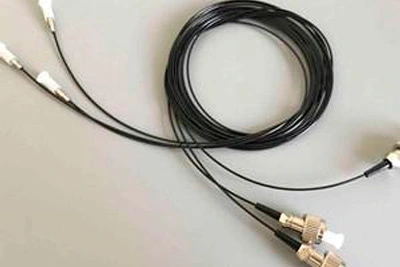According to Science Daily, any science textbook would probably write that humans cannot see infrared light. Invisible light such as X-rays, radio waves, and infrared light waves all fall outside the visible spectrum. Recently, scientists have discovered that under certain circumstances, the human eye may be able to perceive infrared light.

Using retinal cells in mice and humans, as well as powerful lasers that emit pulses of infrared light, the researchers found that photoreceptors in the retina sometimes receive a hit of infrared energy when the laser pulses at high speed. When this happens, the human eye is able to detect light that lies outside the visible range. "Using these experimental results, we are trying to develop a new tool that will allow physicians to not only examine the eyes, but also stimulate specific parts of the retina to determine whether the retina is functioning properly, and we hope that this finding will eventually lead to some practical applications," the researchers said. application."
The research began when some scientists in the research group reported seeing occasional green flashes while working with infrared lasers. Unlike the laser pointers used in lecture halls and toys, the powerful infrared lasers used by scientists emit light waves invisible to the human eye. The researchers reviewed the scientific literature and re-reviewed reports of seeing infrared light. They repeated the experiments that allegedly saw infrared light, and analyzed the light emitted by different lasers to investigate why and how infrared light sometimes became visible. Experiments with laser pulses that sent the same number of photons but with different durations showed that the shorter the pulse, the more likely it was to be seen. Although the intervals between pulses are so short that they cannot be detected by the naked eye, the presence of these pulses is important for the human eye to see this invisible light.
Generally, after photons are absorbed by the retina, the latter creates a molecule called a photopigment and begins the process of converting light into vision. In standard vision, each of the numerous photopigments absorbs a photon. The large number of photons packed in short pulses of higher-pulse lasers makes it possible for a single pigment to absorb two photons at a time, and the combined energy of the two photons is enough to activate the pigment, allowing researchers to see normally invisible Light. The visible spectrum includes light waves with wavelengths between 400 and 720 nanometers, but if a pair of 1,000-nanometer-long photons hit a pigment molecule in the retina in rapid succession, the energy delivered by those photons is the same as a single impact of a 500-nanometer wavelength photon. The same amount of energy is produced, and that's right in the visible spectrum, which is why people can see invisible light.
Although researchers are the first to report that the eye is able to sense invisible light through this mechanism, making things visible with less powerful lasers is not unprecedented. Two-photon microscopy, for example, uses laser light to detect fluorescent molecules deep in tissue. The researchers say they are already studying how to apply the two-molecular approach to a new type of ophthalmoscope that will help physicians examine the inside of a patient's eye. By shining an infrared pulsed laser at a patient's eye, physicians can stimulate parts of the retina to understand the structure and function of the eye in both healthy eyes and those with retinal diseases such as macular degeneration.

